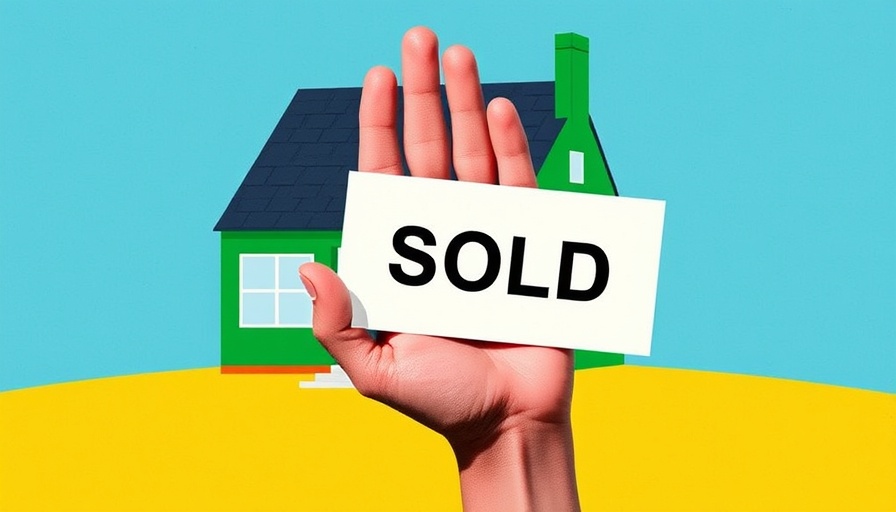
The Power of Home Staging: A Hidden Asset in Real Estate
Selling a home can often be a daunting task, especially in a competitive market. However, one crucial strategy stands out as a game-changer: home staging. A recent report by the National Association of Realtors (NAR) highlights that roughly 50% of staged homes are sold faster than their non-staged counterparts, making it a pivotal tactic for sellers seeking to close deals quickly. Furthermore, approximately 30% of these homes command higher selling prices, demonstrating the potential financial rewards of this approach.
Why Home Staging Works: The Psychological Edge
Home staging isn't merely about aesthetics; it's about creating a welcoming environment that allows prospective buyers to visualize themselves living in the space. By enhancing the home’s best features and minimizing its flaws, staging forms an emotional connection that can be crucial for facilitating a sale. The NAR study found that 30% of real estate agents reported that staged homes sold slightly faster, while 19% saw significantly quicker sales. This emotional appeal plays a crucial role amidst the expectations influenced by home improvement television shows, which set a high standard for buyers.
Cost vs. Reward: Understanding Home Staging Expenses
While staging a home can incur costs, the investment can yield significant returns. Costs typically range from $600 to $1,800 per month, depending on location and the extent of staging required. In areas like North Dakota, these fees might be lower compared to premium markets such as New York City, where top-tier staging comes at a premium. Understanding these costs is vital for sellers and can help evaluate whether to engage professional staging services or adopt DIY approaches.
Staging Trends: What Buyers Want in a Home
According to the NAR report, nearly half of buyer agents indicated that clients expect homes to reflect the polished feel often seen in reality television. This trend shows a shift toward aspirational living standards, making it essential for sellers to meet buyer expectations through effective staging. Consider elements such as neutral color palettes, modern fixtures, and minimalistic decor to appeal to the broadest audience.
Evaluating Home Staging as a Strategic Investment
Sellers contemplating home staging should weigh potential financial benefits against the costs involved. Staging not only promotes faster sales but may often result in a higher sale price, explaining why 12% of agents reported no effect of staging on buyer behavior. For those in the retirement planning phase or positions in financial advisory, recognizing these market dynamics is not merely a transaction; it's a strategic financial decision impacting future investments.
Real Estate Market Insights: Timing and Trends
In today’s fluctuating real estate landscape, timing plays an essential role. Sellers can benefit greatly from staging when entering the market during peak seasons, like spring. The enhanced presentation of a staged home can stand out in listings and during showings, enticing more potential buyers to visit, while improving chances of receiving offers sooner.
The Future of Home Sales: Evolving Strategies
As buyer expectations continue to evolve and technology reshapes the home shopping experience, staging will likely remain a relevant strategy. Virtual staging technology and online listings are gaining traction, further enhancing how homes are showcased. Investors and homeowners should stay informed about these trends to optimize their selling approach and maximize returns on their investments.
In conclusion, home staging is not merely a superficial concern but a strategic decision that can significantly affect the selling process. For retirement planners and investors, understanding the financial implications of staging can empower them to make informed decisions that align with their long-term goals. Consider making staging a part of your sales strategy to harness its full potential.
 Add Row
Add Row  Add
Add 




 Add Row
Add Row  Add
Add 








Write A Comment